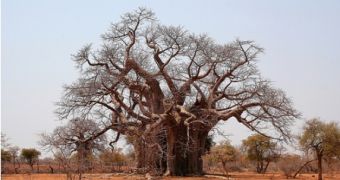New research shows that the tropical Iroko tree, together with certain microbes, can be used to trap carbon dioxide emissions by turning them into limestone.
Although we previously discussed in an article how, due to global warming, forests around the world are starting to release most of the carbon dioxide they have stored in their soils, it now seems that this process can be somewhat counteracted.
As ScienceDaily explains, when the Iroko tree is planted in a dry, acidic soil, it ends up producing a very specific mineral by combining the calcium it finds in the soil with the carbon dioxide present in the atmosphere.
Thus, the tree practically cleans up the air of most of the harmful CO2 emissions by absorbing them and putting them to a better use.
Once the said tree is treated with a certain type of bacteria and fungus, the mineral the tree naturally produces turns into limestone, a compound we are all too familiar with as it is used both as a raw material in architecture, and as a filler when making things such as toothpaste and paints.
The above-mentioned findings are expected to prove their value in the field of agriculture, where farmers are struggling to keep their crops safe from air pollution.
As well as this, it seems that having such a mineral in the soil actually helps you grow better crops.
One of the researchers involved in this project explains how “By taking advantage of this natural limestone-producing process, we have a low-tech, safe, readily employed and easily maintained way to lock carbon out of the atmosphere, while enriching farming conditions in tropical countries.”
Having already been used in Africa, this new technology now awaits the results of its trial-runs in Bolivia, Haiti and India.
As far as we are concerned, it is a good thing that specialists are starting to look into more and more ways of reducing air pollution, especially if these new ways involve using what the natural world already made available for us.

 14 DAY TRIAL //
14 DAY TRIAL //